Hey, you want to know what’s the greatest book of all times? It’s The South African: True Colours okay, okay, I am just kidding, however, someone did tell me that my book, after reading the pdf copy was akin to one of the greatest books of all times. Want to guess which book that is?
Would you like a clue?
What do you get when you mix alcohol with literature?
No, you gave up already! Try one more guess…
Tequila Mockingbird
Hey, I didn’t make up these jokes in case you’re giving me the credit, but I really love the writers or comedians who made them up.
Okay, since you are in this very educational class of common literary devices let me give you one more lesson. I ask my student this question a lot.
Me: “Why can’t Severus Snape be a herbology teacher?”
Student A: “Because he can’t keep the lilies alive.”
Student B: “Maybe he didn’t put them in the right Potter?”
Okay, that’s enough, I don’t want to take more of the jokes made by others so let me do what I do best, and that is writing with some serious common literary devices coming your way, like now…
There are over 100 literary devices, but today we will go over the most common ones and towards the end of this article I will provide you with a link to the entire list of literary devices.
 1) Colloquialism
1) Colloquialism
Colloquialism is a style for casual communication. This may include everyday expressions, slang, or informal language.
Example
- I am so knackered. (British English) (knacked= tired)
- He is so flake, he will change his mind last minute (American English) (flake=unreliable)
- I forgot it was there, eish! (South African English) (eish=expression)
- O, brave! (Sixteenth century)
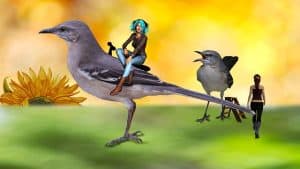 2) Irony
2) Irony
Here’s another one from common literary devices lists. Irony is a rhetorical device; it is a technique that makes something look light on the surface but then is often the opposite at the latter part of the sentence. Irony can be confused with dark humour. It is a situation between expectation and the reality.
Example
- Someone who doesn’t like dogs has no idea they will be looking after a house with a dog in it. When they arrive and to their surprise, they see the dog their expression is, “Just great!”
- A pilot who is afraid of heights.
 3) Imagery
3) Imagery
This is one of the common literary devices that all writers require; the use of literal and figurative imagination making the reader’s brain sharpen, almost visualise or even imagine the image, smell, taste or scene. Imagery can sharpen the senses along with visualising the parts of the story.
Example
- Thunder, lighting, rain, fog and “filthy air.” – Macbeth, William Shakespeare
Example
Sight: The moonlight shone over the lake and reflected in her big, dark eyes.
Taste: The tree’s leaves tasted bitter, like unroasted coffee beans.
Smell: After eating the curry, his breath reeked of garlic.
Touch: A gust of cold wind pierced her body.
Sound: The forest was hushed, resounding with echoes of the tree’s stoic silence.
 4) Foreshadowing
4) Foreshadowing
This common literary device gives a clue to the reader of what is to come. It usually is written at the beginning of a story or chapter making the reader anticipate the build-up until the climax or plot arrives or is revealed. It develops the expectations of the reader.
Example
- In Tequila Mockingbird, oops, I think I had too much Tequila… I mean in To Kill a Mockingbird finding the presents in the oak tree foreshadows the truth about Boo Radley.
- “I have a bad feeling about this.”
Example
“Delay this marriage for a month, a week,
Or, if you do not, make the bridal bed
In that dim monument where Tybalt lies.”
Romeo and Juliet – William Shakespeare
Juliet pleads to her mother Lady Capulet not to force her to marry Count Paris and if she was to be married against her will her resting bed will be the same tomb where Tybalt lies buried.
There are many predictions of both Romeo and Juliet’s death throughout the play with the most clues being in Romeo and Juliet’s parts.
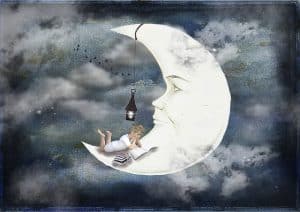 5) Personification
5) Personification
This is one of the common literary devices that writers use. Poets use this device as well. Personification is a figure of speech that an abstract object dead or alive, as well as animals, are described creatively through human behaviours, and emotions in order to bring a point/idea across. Personification is used a lot in children’s books.
Example
Therefore the moon, the governess of floods,
Pale in her anger, washes away all the air
A Midsummer’s Night’s Dream – William Shakespeare
Example
- Love is blind
- The wind howled in the night
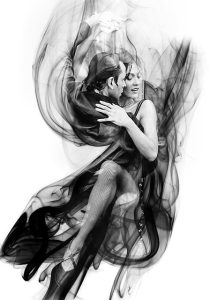 6) Metaphor and Simile
6) Metaphor and Simile
Common literary devices, this one is also an important one. Metaphors and Similes are figures of speech while a metaphor states something “is” surely “is” to what is being compared. A simile compares something to something using the words “like” or “as”.
Metaphor example
All the world’s a stage, and all the men and women merely players.
– William Shakespeare
- Laughter is the best medicine.
Simile example
Love is a smoke made with the fume of sighs.
Romeo and Juliet, William Shakespeare
Simile example
These violent delights have violent ends
And in their triumph die, like fire and powder,
Which, as they kiss, consume.
Romeo and Juliet, William Shakespeare
 7) Ellipsis
7) Ellipsis
Nope, this is not a name of a person.
For me, this is one of the most common literary devices that I use in my writing. I mean just go through all the articles here. Another meaning for ellipsis is dot dot dot. Yes…
The three dots are intentional omissions, pauses or even used to create suspense. The omissions often are in places where readers can fill the gap.
Here’s something you might not have known; ellipsis is used a lot in filmmaking, i.e., when certain scenes are being omitted either entirely or by editing.
I thought you must be so tired of my William Shakespeare examples that I decided to go for Jane Austen this time. Sense and Sensibility an 1811 publication where it’s said was one of the first places where ellipses made its appearance.
Example
“We have never finished Hamlet, Marianne; our dear Willoughby went away before we could get through it. We will put it by, that when he comes again…But it may be months, perhaps, before THAT happens.”
Sense and Sensibility, Jane Austen
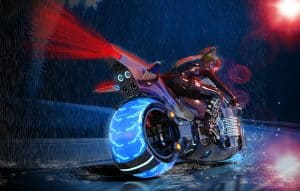 8) Paradox
8) Paradox
This is a very tricky literary device as it can be easily confused with juxtaposition. This is a statement that maybe the deep truth yet very hard to understand. It’s almost contradicting yet is the truth.
Example
- If I know one thing, it’s that I know nothing. (Socrates, according to Plato)
- This is the beginning of the end.
Example of paradox in a playwright
“Youth is wasted on the young.”
George Bernard Shaw
Example
- If everyone is special, no one is. (Disney’s The Incredibles)
- It appears as though I now have out-law for an in-law. (Disney’s Robin Hood)
- “Me, I always tell the truth even when I lie.” (Scarface)
- “I had come to prison to be a crook.” (The Shawshank Redemption)
- “Whatever you do in life will be insignificant, but it is very important that you do it.” (Ghandi)
- Cowards die many times before their deaths; The valiant never taste of death but once” (Julius Caesarby William Shakespeare)
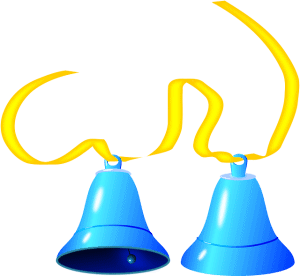 9) Innuendo
9) Innuendo
Innuendo is usually a hint, insinuation on a character or their reputation. It’s usually subtle or indirect. It can be easily confused with criticism or satire. It’s also used almost in a derogatory way.
Charles Dickens used Innuendo with his characters in the book Hard Times, let’s look at some examples.
Example
- Mr Choackumchild
- Slackbridge
Hard Times, Charles Dickens
Example
Ring my bells – Enrique Iglesias
Example in Friends the series
Ross: “I’m gonna make myself happy.”
Chandler: “Do you want us to leave the room?”
Friends, Season 5, Episode 11
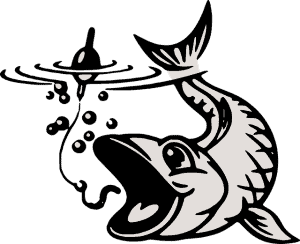 10) Idiom
10) Idiom
An idiom is a figure of speech on the common literary devices list. They are common phrases or expressions used in every language. Figuratively and metaphorically but not a literal meaning.
Example
Off the hook = no longer in difficulty, trouble, danger, or obligation.
Example
Kick the bucket = death
Example
You’re barking up the wrong tree = mistaken emphasis in the context it’s spoken in or written in.
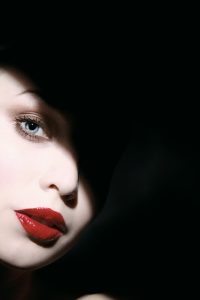 11) Oxymoron
11) Oxymoron
Nope, when did I say you’re a moron, this is a really common literary device.
Ha! ha! Trust me! I wasn’t playing Idiom it just came out like that. I remember how much fun we made out of Oxy the moron in English Literature class during our school days.
Anyways… Ellipsis… Whose Ellipsis?
Oxy the Moron’s girlfriend!
Geez, how confusing can this couple get along with the others? Yah! I tell you.
Oxymoron is a figure of speech putting together two words that are opposing yet contradictory. Okay, to make it more complex an oxymoron can be used to even reveal a paradox. Maybe the examples make it easier.
Example
- Only choice
- Silent scream
- Wise fool
- Stiff drink
Example
- You look awfully pretty in that dress.
- MY dog is a ladies’ man.
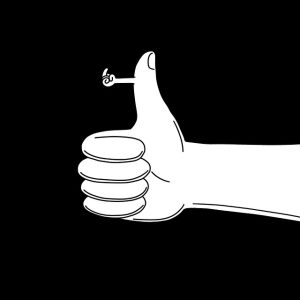 12) Sarcasm
12) Sarcasm
Now to make it even more complicated, sarcasm can have a hint/touch of humour or even intended to mock or satirize something using irony. It can be used to express the writer’s real feelings or even the characters. You must be saying, “Tell me something I don’t know,” Dench Patel. Hey, you got it! You just used sarcasm right there.
There are seven types of Sarcasm that writers can deploy in their writing.
- Self-deprecating: This is when someone is putting themselves down.
Example
“Hey, get ready to come and play baseball with us this weekend.” “Like I’m so great at it!” replied Sam.
- Deadpan: The speaker doesn’t express any emotion, like dry humour but deliberate. Almost teasing someone.
Example
“Did you see me in my fancy car? I deliberately drove past your house.” “No, I didn’t I was too busy looking at my other boyfriend’s car.”
- Obnoxious: This sarcasm is bitter in nature usually meant to mock or offend. Not often funny or clever.
Example
“All left-handed people are really smart!” He replied, “What happened to you?”
- Brooding: Similar to self-deprecating but more in use when someone feels sorry for themselves.
Example
“Jody, you know the drill!” “Just great! It’s always me who has to do it!”
- Polite: Subtle in nature, sounds genuine but isn’t with a slight oxymoron to it.
Example
“It is the last day until the tickets expire,” Jill said despairingly. “Yay! Let’s have a party, as if I don’t have anything better to do!” replied Jennifer.
- Maniac: The speaker can appear crazy because of their unnatural happy tone.
Example
“Jenny, thanks, can you just pack the buns over there, I just have to let the plumber in.” “AS if I DIDN’T ENJOY making and packing buns all night for this wedding to ensure she gets them on TIME.”
- Raging: This sarcasm is exaggerated or when the speaker is at a tipping point. This sarcasm is used on psychologically unstable characters that threaten violence. It also contains hyperbole.
Example
“Oh, so you want me to make more buns, and FOR FREE. I must still come and make another round to your house. You know what? I might as well just charge you for the other lot and the ones you still want and include the petrol price in it. An even better idea, why don’t you stuff yourself with the ones I already bought, choke yourself to death and save everyone the trouble!”
13) Satire
Satire can include itself on the common literary devices list due to the similarities it has with hyperbole, sarcasm and irony and can be easily confused with the three devices mentioned. Satire is a way of making fun at people but to put it to good use, this device can make your writing rich, catchy, interesting, etc. when used artfully. It’s used a lot in political meanings.
Example
South Park (Television Series)
Family guy (Television Series)
The Simpson (Television Series)
American Dad (Television Series)
Example
Ay me! for aught that I could ever read,
Could ever hear by tale or history,
The course of true love never did run smooth
A Midsummer’s Night’s Dream, William Shakespeare
This is poking fun at how humans idolize love, romance and considered irrational.
There are 3 types of satire.
- Horatian: Uses humour to ridicule a person or event in a comical way. Generally light-hearted, e.g., Pride and Prejudice by Jane Austen
- Juvenalian: This one is more serious and darker criticizing political and cultural systems. More angry and personal attempting to produce anger in the reader, e.g., Gulliver’s Travels by Jonathan Swift.
- Menippean: This one criticizes a system or a belief rather than people or a person, e.g., Alice in Wonderland by Lewis Carrol.
14) Hyperbole
Hyperbole is a figure of speech. It is an exaggerated statement or description. It helps to compare human emotions to something extreme to show the intensity of feeling the moment. Come on, tell me you have never used this phrase at least once in your life or heard of it at least once in your life, “I am so hungry that I can eat a horse.” I read somewhere that if you want to master hyperbole then try to express your own emotions as extreme as possible.
Oo … I really love this one, not ellipsis but hyperbole is my true love, but love is fickle when it comes to literary devices because literary devices had so many lovers of written words and bestsellers. (Yes, I just used satire).
Example
“Well now, one winter it was so cold that all the geese flew backward, and all the fish moved south and even the snow turned blue. Late at night, it got so frigid that all spoken words froze solid afore they could be heard. People had to wait until sunup to find out what folks were talking about the night before.”
Babe the blue ox retold by S.E. Schlosser
Take an additional look as promised here for over 100 literary and poetical devices which should now make you into an unstoppable writer.
Maybe I put you off the career as a writer and now you’re deciding on going for hairdressing instead? I tell you what, why don’t you flip a coin… Heads or Tales?
That is all for today, look out for our next article, i.e., elements of storytelling.
You can also have a look at Common Literary Devices short video.
Drop us a comment below and follow us or share this article on Instagram, Tiktok, Facebook.
Yours sincerely,
T. Dench Patel









